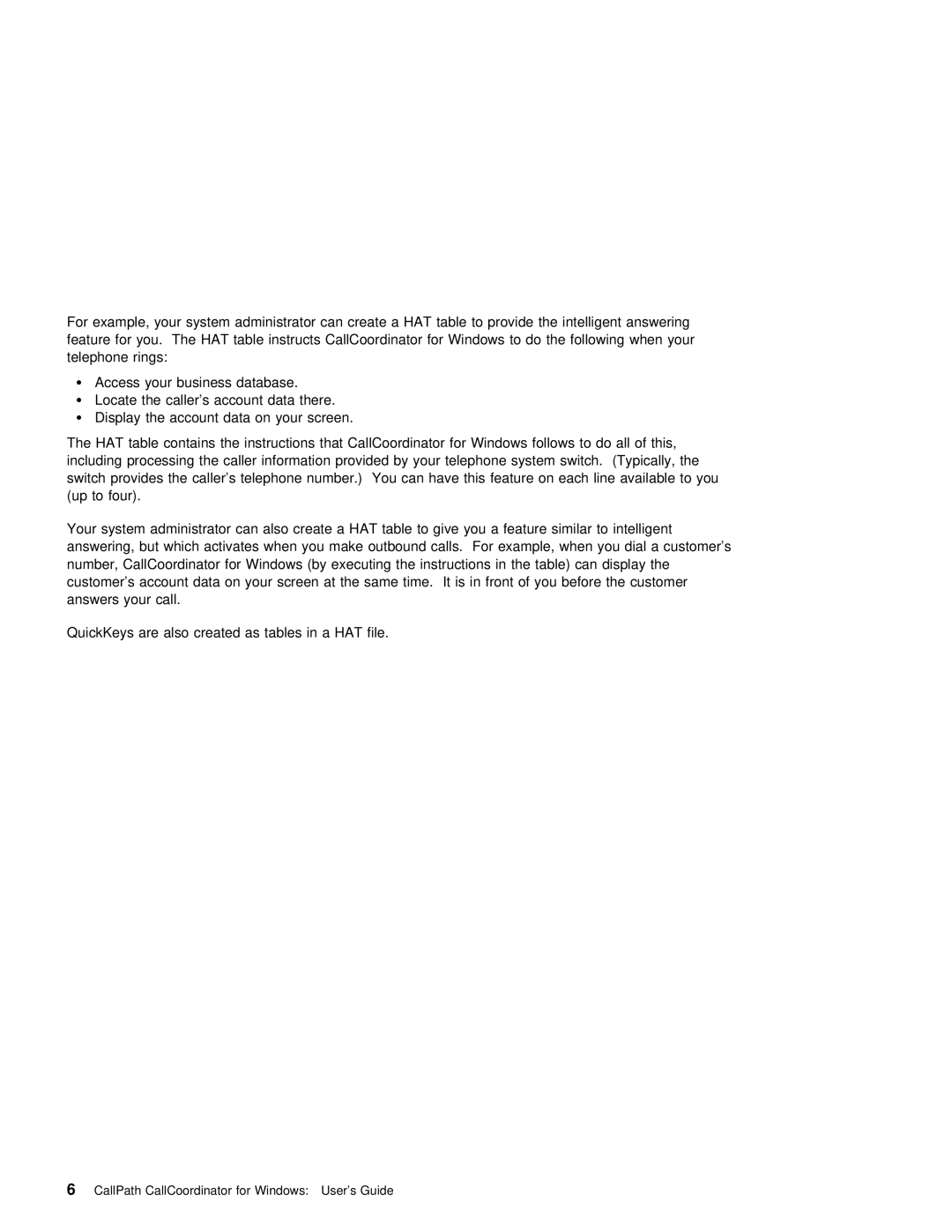For example, your system administrator can create a HAT table to provide the intelligent answering feature for you. The HAT table instructs CallCoordinator for Windows to do the following when your telephone rings:
¹ | Access | your | business | database. |
¹ | Locate | the | caller’s | account data there. |
¹Display the account data on your screen.
The | HAT | table contains the instructions that CallCoordinator for Windows follows to do | all | of | this, |
| ||||||||||
including | processing the caller information provided by | your telephone system switch. (Typically, the | ||||||||||||||
switch | provides the | caller’s | telephone | number.) You can | have this | feature | on | each | line | available | to | |||||
(up | to | four). |
|
|
|
|
|
|
|
|
|
|
|
|
| |
Your system administrator can also create a HAT table | to give you a feature similar | to | intelligent | |||||||||||||
answering, but which activates when you make outbound | calls. For example, when you | dial | a | customer’s | ||||||||||||
number, | CallCoordinator for Windows (by executing the instructions in the table) can | display | the |
| ||||||||||||
customer’s account data on your screen | at | the | same time. It is | in front | of | you | before | the | cust | |||||||
answers | your | call. |
|
|
|
|
|
|
|
|
|
|
|
|
| |
QuickKeys are | also | created | as tables | in | a HAT | file. |
|
|
|
|
|
|
|
| ||
